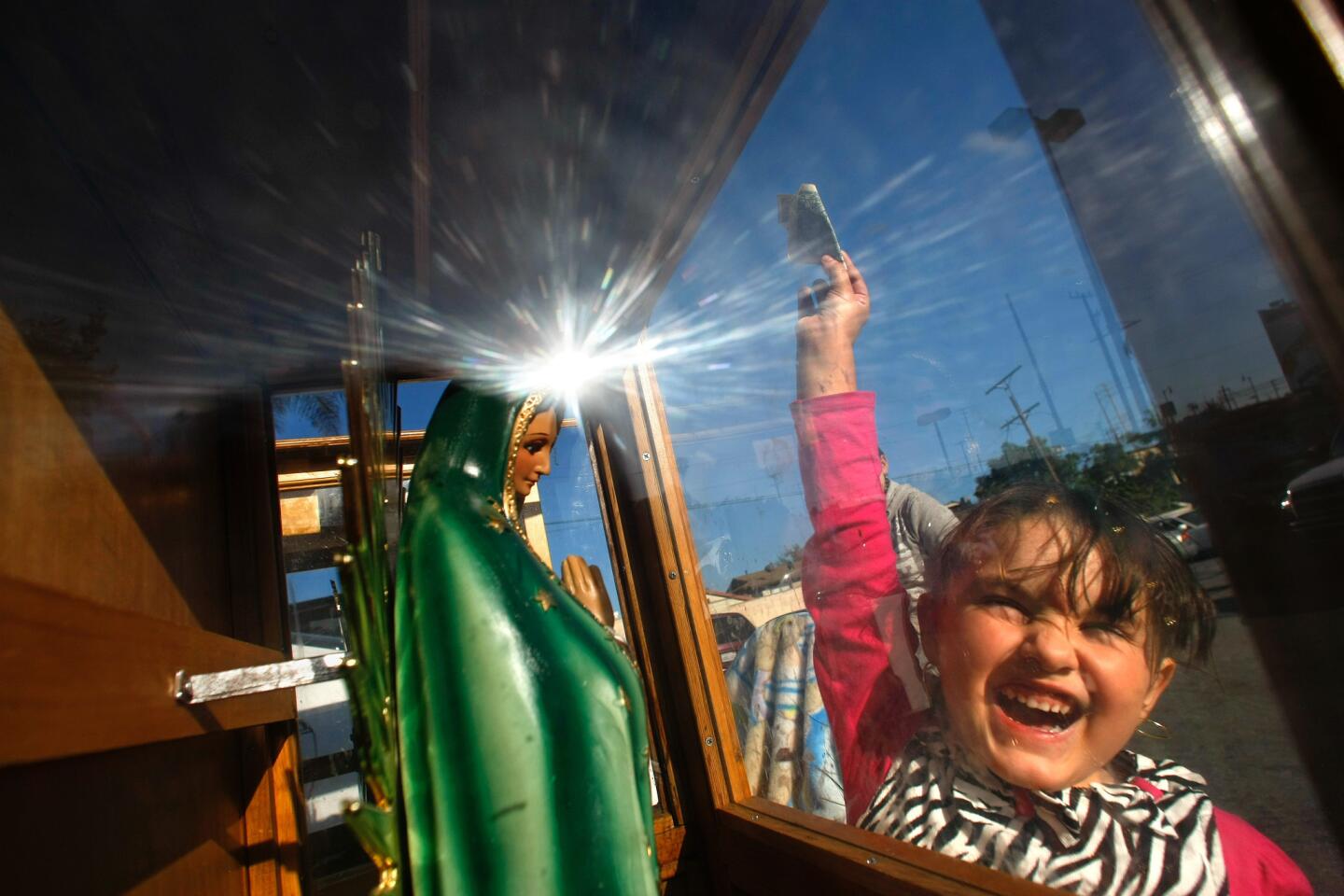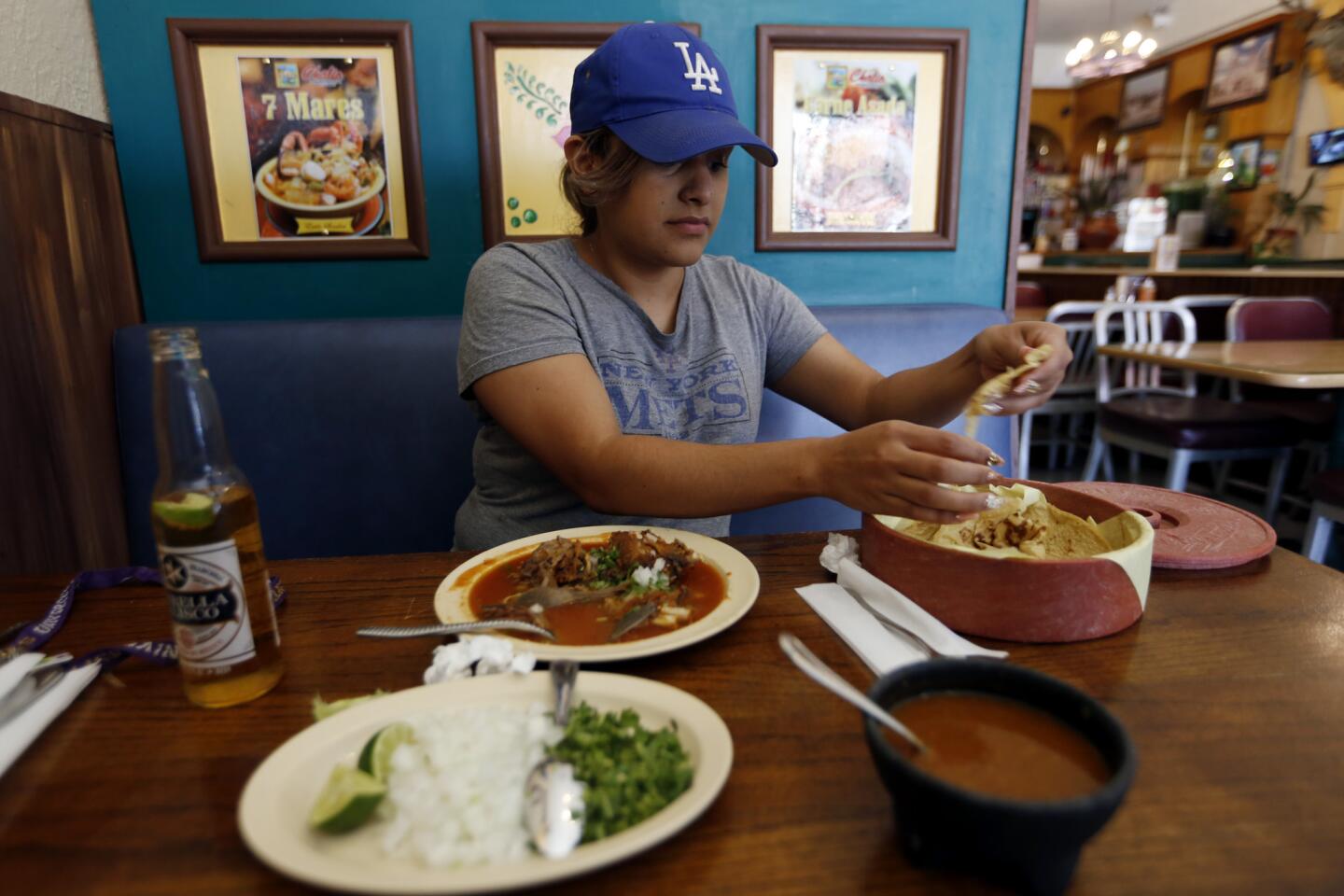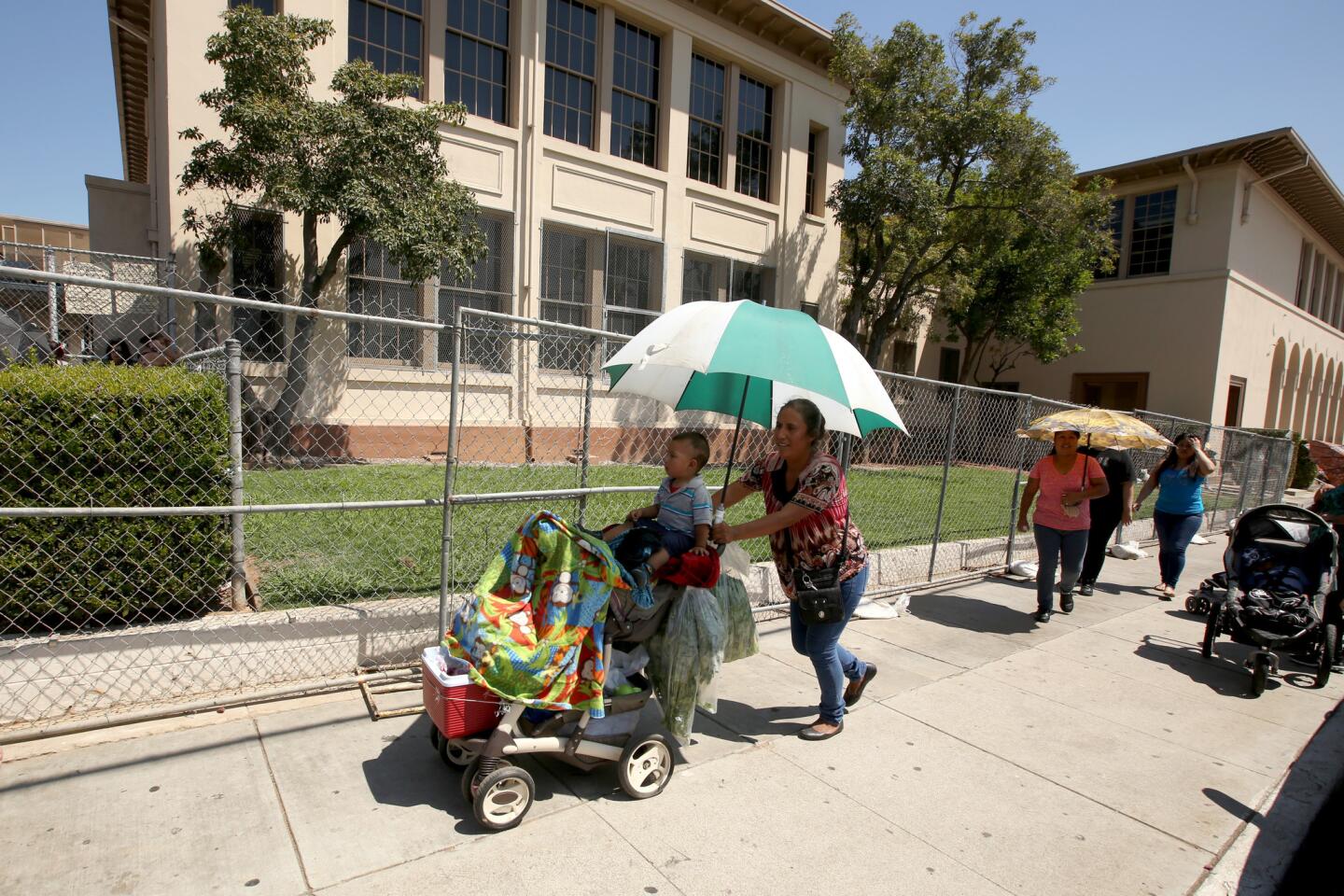Neighborhood Spotlight: East Los Angeles a physical homeland and cultural touchstone
- Share via
East Los Angeles is both a place and a mode of being, a physical homeland and the spiritual heart of the Mexican diaspora in the United States.
The cultural and political effects that this vibrant neighborhood have had, across the country and around the world, are hard to overstate. It’s impossible to imagine Los Angeles without East L.A., but although the two are often conflated in the popular imagination, the latter is actually an unincorporated part of L.A. County, lying just across the Indiana Avenue city limit from Boyle Heights.
From the early days of the original pueblo until the 1920s, the land that would become East Los Angeles was primarily agricultural. With Boyle Heights and the other L.A. neighborhoods east of the river filling up, real estate developers realized that the cheap land along Whittier Boulevard, served as it was by a trolley line that put downtown Los Angeles within easy commuting distance, was ripe for the creation of new subdivisions.
Belvedere Gardens was the first of those subdivisions. Like Boyle Heights and other Eastside neighborhoods, it benefited from lax enforcement of exclusionary racial covenant laws, allowing immigrants of all backgrounds, but especially Mexican-Americans, the opportunity to buy homes. As the neighborhood grew, it developed its distinctive, world-famous cultural markers, from zoot suits to lowrider cars cruising down Whittier Boulevard.
In the 1960s, it was an important scene in the burgeoning Chicano political movement. The awakening was crystallized during the East L.A. Walkout by students protesting substandard schools and the Chicano Moratorium march against the Vietnam War, in which four people — including noted journalist Ruben Salazar — were killed by L.A. County sheriff’s deputies.
Today, East L.A. remains an influential — perhaps the most influential — Latino neighborhood in the region, with more 120,000 residents, 96% of whom are Latino. Whether in the visual arts, in music, the written word, or in the realm of political thought, East Los Angeles continues to make unique and important contributions to the culture of Southern California and beyond.
Neighborhood highlights:
On the Boulevard: Whittier Boulevard, the historic Main Street of the Eastside, features an amazing mix of auto-centric architecture from the early to mid-20th century and is still a hot cruising locale.
Holy mole: With restaurants serving regional dishes from all corners of Mexico, food trucks slinging hangover-demolishing burritos, and street vendors selling bacon-wrapped hot dogs, it may or may not always be 100% authentic, but it’s always good.
Immigrant roots: The Mexican-American experience is at the heart of East Los Angeles, but the Chinese and Serbian cemeteries point to the rich tapestry of immigrant stories from all over the world that the neighborhood has played a crucial part in.
Neighborhood challenges:
Continuity of culture: As nearby El Sereno and Boyle Heights see a wave of redevelopment and the potential for increased housing costs, its lower real estate costs and proximity to downtown may mean that East Los Angeles could soon face the issue of gentrification on a larger scale.
Expert insight:
Leo Nordine, broker and owner of Nordine Realtors, sold 40 properties in East L.A. last year. He said the neighborhood sees “a ton of action” due to high turnover among homeowners.
Compared with nearby communities, East L.A. continues to be relatively affordable for its location and proximity to major freeways, he said.
“Obviously it’s close to downtown and close to the Arts District. As all these neighborhoods gentrify, East L.A. is right there, so I think it’s a great place to invest,” Nordine said. “It is definitely changing, and some people might not like that.”
Market snapshot:
Parts of the 90022, 90023 and 90063 ZIP Codes overlap the East Los Angeles area.
In November, based on 10 sales, the median sale price for single-family homes in the 90022 ZIP was $388,000. In the 90023 ZIP seven sales resulted in a median price of $375,000, and in the 90063 ZIP, the median price was $415,000 based on five sales.
Report card:
There are more than a dozen public schools within the boundaries of East L.A. Among them is Humphreys Avenue Elementary, which scored 752 out of 1,000 in the 2013 Academic Performance Index.
Robert F. Kennedy Elementary scored 717, and Joseph A. Gascon Elementary had a score of 694. Belvedere Middle had a score of 733, David Wark Griffith Middle scored 724, and Social Justice Leadership Academy had a score of 593.
MORE FROM HOT PROPERTY
Los Angeles County saw nearly $20 billion in real estate sales in 2016
Former Charger Quentin Jammer catches a buyer for San Diego home
‘Zootopia’ director Rich Moore buys a Mediterranean in historic Whitley Heights
More to Read
Sign up for Essential California
The most important California stories and recommendations in your inbox every morning.
You may occasionally receive promotional content from the Los Angeles Times.










